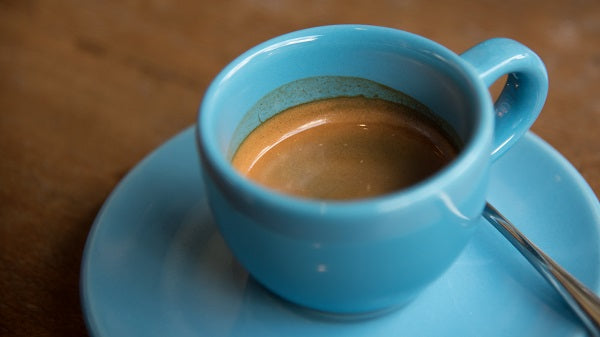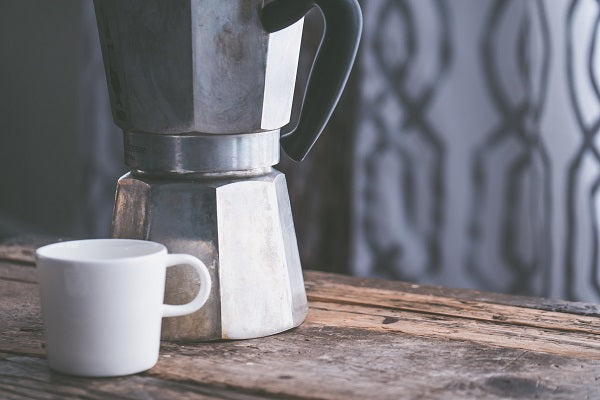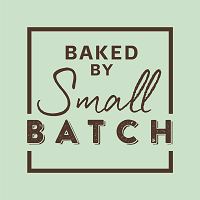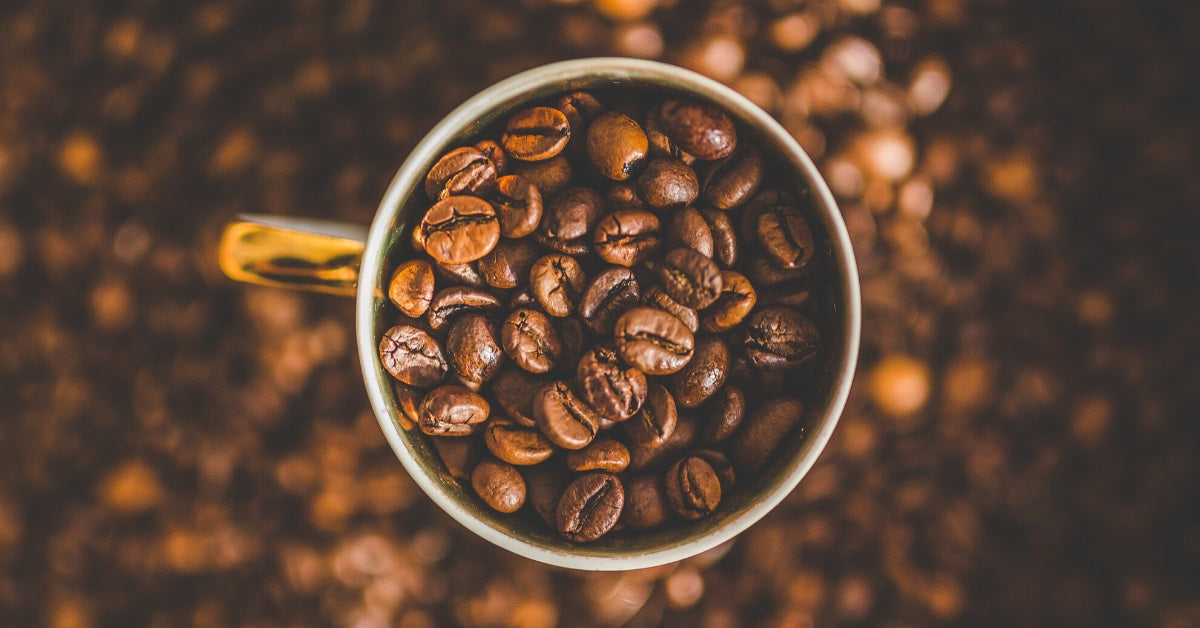If you’ve been browsing social media lately, you know that Dalgona Coffee is all the rage. Food, Dessert, and Drink Influencers are posting how-to videos demonstrating the technique of creating the drink, and it is going viral. We, too, were intrigued by the brisk whipping of instant coffee and sugar until it turns into a fluffy foam, then spooning it on top of cold milk, so we tested the recipe.
While Dalgona Coffee is tasty, it didn’t come close to replacing the coffee experience we hold near and dear to our hearts; a Cuban Cortadito. For coffee lovers, Cuban Coffee is worth getting to know and learning to make and enjoy alongside your favorite brownies. In this article, we will discuss how to make real Cuban Coffee, what brands are most authentic, and how to create various styles of Cuban Coffee Drinks.
Cuban Coffee a Brief History
Before we start to discuss Cuban Coffee, its culture, and what makes it so special you may want to know a little about its history. Coffee was introduced to Cuba in the mid-1700s and soon after, the country began growing it. In the 1950s the exportation of coffee beans peaked to over 20,000 metric tons a year. Then came the Cuban Revolution and the coffee industry nationalized, and production began to decline. Now, coffee prices for farmers and processors are regulated by the government.
Cuban Coffee Culture

Like many things available to the Cuban people, coffee is rationed, limited to only 4 ounces of coffee per person, per month. This reduced access is a hardship to the warm and friendly Cuban people, as drinking coffee is a big part of social interaction in their culture. Many Cubans grind chickpeas and add them to the ground coffee when brewing, extending the life of their limited supply.
Unlike coffee drinking in the U.S. where everyone grabs a giant cup on the run to chug it, Cuban’s use coffee for socializing and being hospitable. It provides a way to connect with neighbors, family, and friends. Cubans find pleasure in taking time to methodically prepare the delicious brew, sit down and engage in a long conversation over a strong, sweet cup. Preparation traditions and recipes have emerged that enable Cubans to share the joy of coffee together despite the limited supply.
Cubans say that the word CAFE represents four important characters of their beloved beverage: “C” stands for Caliente (hot), “A” for Amargo (bitter), “F” for Fuerte (strong) and “E” for Escaso (sparse). These traits are quintessential for Cuban Coffee.
How to Make Cuban Coffee
The traditional and best way to make Cuban Espresso Coffee is by brewing it in a stovetop Moka Pot. Moka Pots are available in electric versions as well. The way it works is that there are three chambers in the pot, one for water, one for the ground coffee, and one for the finished brew. The pot is placed on the stove and the water in the bottom chamber heats up, generating steam. The pressure of the steam pushes the water up to the top chamber passing through the second filtered chamber where the coffee grounds are housed. Upon reaching the third chamber, the water has transformed into a strong, dark brew.
While a Moka Pot is traditional and said to be the best way to make the coffee, an espresso maker or making a strong pot of coffee, in general, can be used as a substitute for those that don’t have a Moka Pot. Popular dark roast espresso coffee brands that can be used for the best results are Café Bustelo, Café La Llave, and Café Pilon.
The Most Popular Cuban Drinks
There are a number of ways Cuban coffee can be made and served, below are four of the most popular. Each drink listed starts with the base drink Cafecito and the variations accommodate different times of day, situations, and taste preferences.
1. Cafecito, Strong and Sweet

The Cafecito, also known as Café Cubano and Cuban Coffee is the base for all Cuban Coffee drinks, it is a “shot” of coffee served in a small cup. When the first drops of the strongest coffee are pushed into the top chamber of the Moka Pot, they are poured out and mixed with sugar to form a thick paste. Traditionally brown demerara sugar with large grain and crunchy texture is used. As the remaining coffee is brewing, the paste is whisked until it turns a light golden brown and looks fluffy, this is called the Espuma. When done brewing, the coffee is poured into the Espuma in a small cup, and the sweet foam is allowed to rise to the top creating a light crema. It is sipped slowly and enjoyed.
2. Colada, Sharing with Friends
When company arrives, a Colada is served. Made the same way as a Cafecito the Colada is a bigger version of the Cafecito, served in a large styrofoam cup (3 to 6 shots) along with a stack of smaller plastic cups used for sharing the coffee with friends.
3. Cortadito, a Softer Cup
If a Cafecito is a little too strong for you, a Cortadito is the answer. A small amount of steamed milk is added to the top of the cup to soften the strength of the brew.
4. Café Con Leche, Milky, and Sweet
Using a shot of Cafecito, an equal amount of hot steamed milk is added to create the Café Con Leche. It’s similar to what’s known as a Latte but with sugar already added in.
If you are in the Neighborhood
There are so many places that serve Cuban Espresso Coffee drinks, we want to give you a few of our favorites to stop in and try when you are in the neighborhood. In New York City, make a trip up to Harlem for authentic Cuban coffee and great food in Harlem’s Original Floridita. Established in 1969, this down to earth café will not disappoint. Besides the addictive Café Con Leche, their authentic Cuban Food is not to be missed.
Visiting the Capital City? If so, don’t miss Colada Shop. On a recent visit to D.C., we stopped into this cheery café where we enjoyed a fantastic Cordadito along with a few amazing Cuban pastries and breakfast items. It was so good that we were compelled to return for more on our drive out.
When in Miami, the most well-known restaurant in Little Havana (and maybe in the country) is Versaille Cuban Restaurant. Besides the delicious Cuban cuisine, my favorite thing about this 8th Street institution is the story of when my cousin and her husband (who happens to be Cuban) stopped in for a bite. Upon entering, the hostess immediately spoke Spanish to them. Her husband asked why she assumed they spoke the language, and she confidently replied, “we don’t get many foreigners here”. Perhaps when you cross over the door’s threshold, everyone is considered part of the family, apropos for the warm and accepting Cubans.
Final Thoughts
Now that you know the basics about Cuban Coffees and how to make them, take some time to experiment and see which drink is your favorite to enjoy with a brownie or cookie. Adjust the recipes to suit your taste and make each drink your own. The important thing is to share the experience and connect with friends. Please tell us about your favorite Cuban coffee drinks, dishes, or interesting cafes we should try. We look forward to hearing your suggestions in the comments below and please reach out if you have any questions. Thank you for reading.



Leave a comment (all fields required)